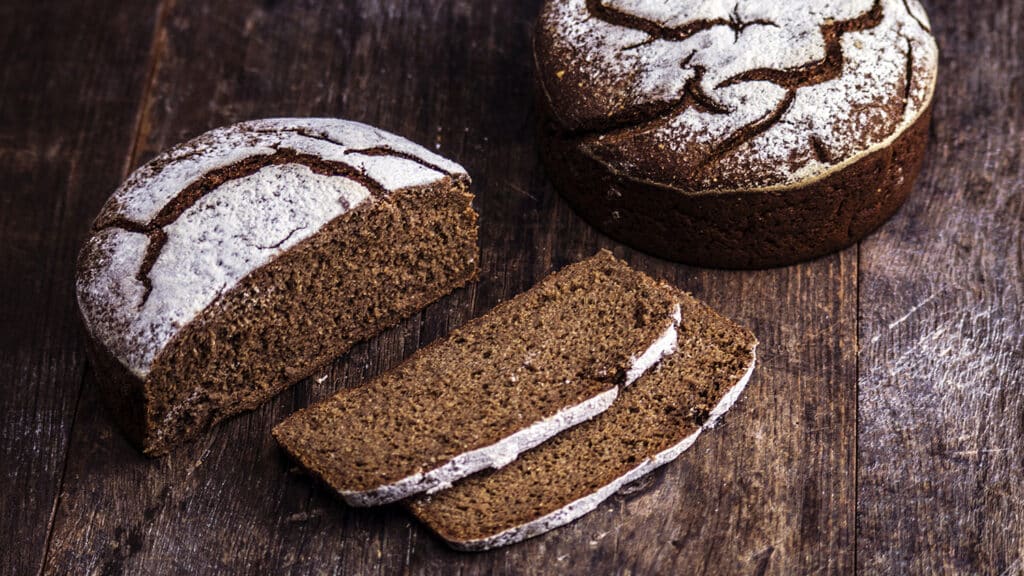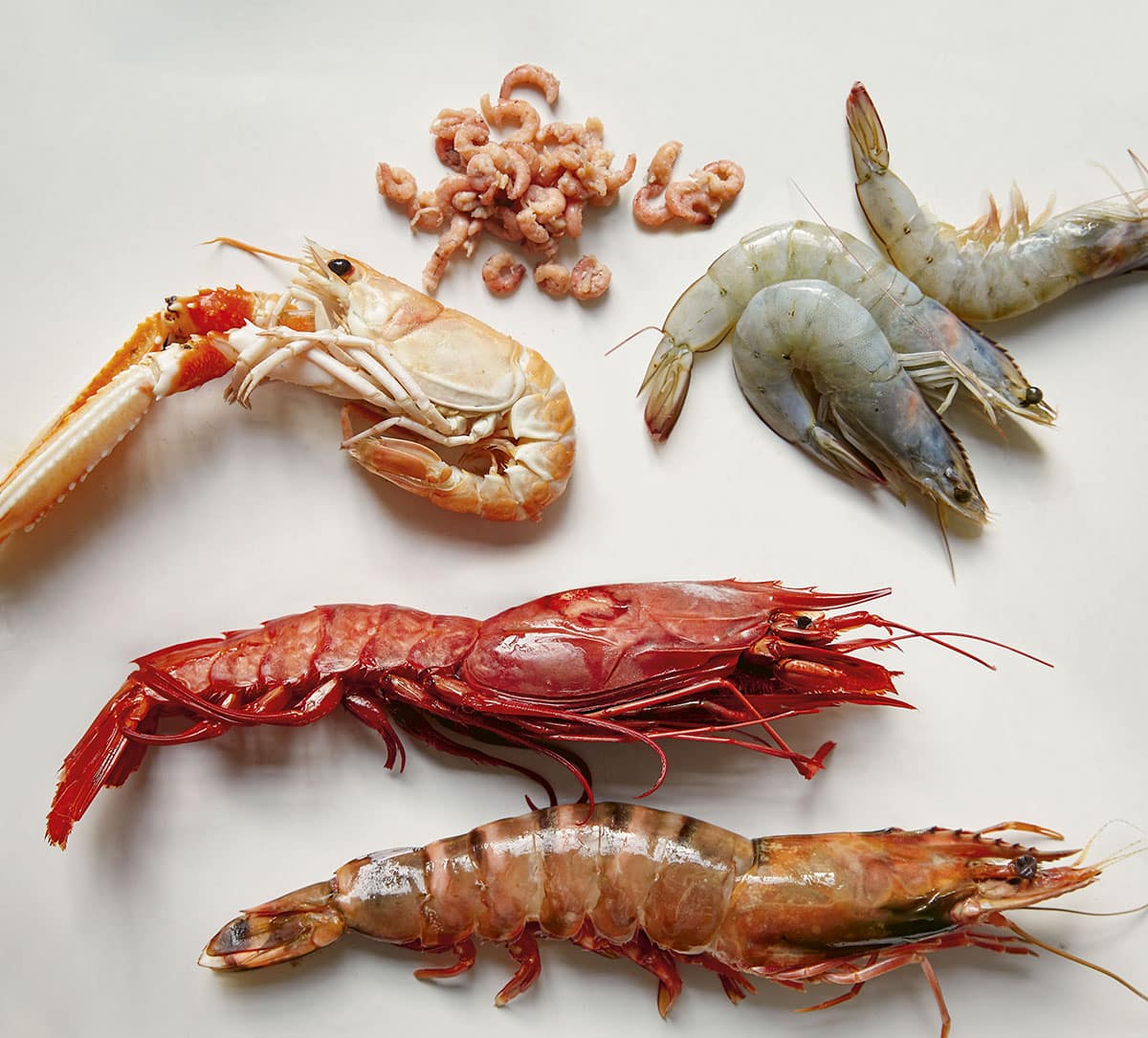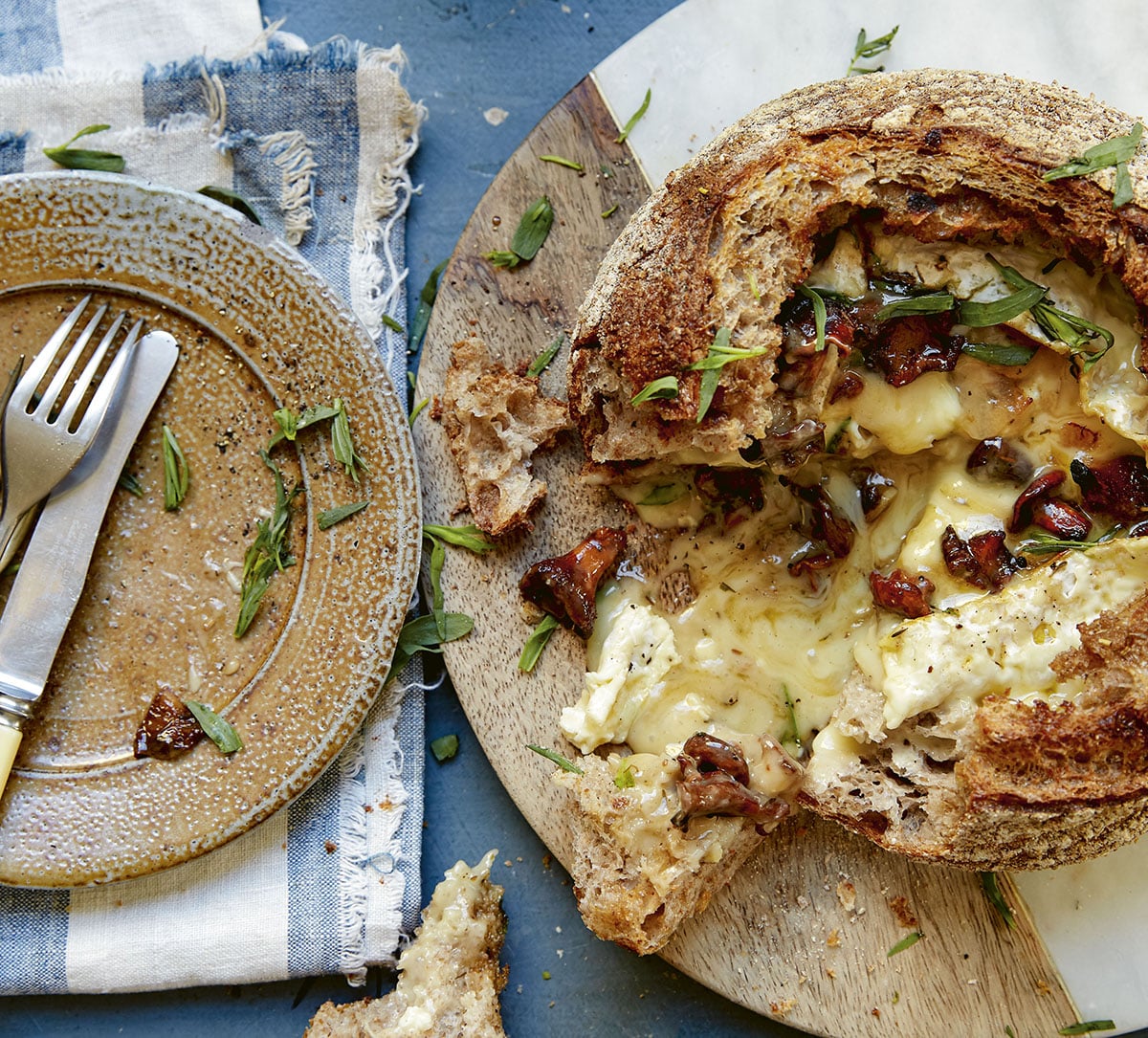The wide world of rye
In an extract from Borough Market: The Knowledge, Nadia Gencas of Karaway Bakery explores the rich potential of rye flour


“THE HERITAGE AND RICH BAKING TRADITIONS OF THE BALTICS MEAN THERE ARE MANY VARIETIES OF RYE BREAD”
Portrait: Kim Lightbody
The origins of Karaway Bakery lie in the Baltics, where rye bread has been a staple for centuries. It is this rich baking tradition that the bakery’s founder Nadia Gencas draws upon in her loaves, cakes and biscuits.
What is rye flour?
Rye flour is a dark, nutty flour milled from rye kernels, also known as rye berries. Baking with rye was once widespread in the UK, but it’s now more commonly associated with Germany, Scandinavia and the Baltic countries, which is where we source our flour from. The heritage and rich baking traditions of the Baltics mean there are many varieties of rye bread based on different techniques and ingredients, each with its own characteristic taste profile and texture.
Is rye bread always sour and dense?
Like wheat flour, the characteristics of different rye flours are determined by how much of the kernel – the endosperm, bran and germ – is present. The greater the proportion of rye kernel, the darker the flour, and the stronger the flavour and density of the final loaf. Rye does have a strength of flavour that wheat doesn’t have, and if wholegrain rye flour is used in a simple sourdough, the bread will be sour and dense. We do sell these firmer versions, and some people do really love them, but a lot of our breads are mellow, moist and soft. Customers tell us they can’t believe that it’s rye bread.

What techniques do you use to make those breads less dense and sour?
One of our signature techniques, which derives from the Baltics, is the scalding process. This takes place pre-fermentation: we scald the rye flour with boiling water, which breaks up the gluten, making it more digestible. Then, during the bread dough resting stage, the natural sugars develop, contributing to the sweeter, mellower flavours of the bread. By keeping the moisture in, the scalding process also extends the shelf-life of the bread – bread made with scalded flour will stay softer and fresher for longer. The fermentation process is also important: each type of loaf has its own sourdough starter and goes through a three- or four-stage natural fermentation process, taking up to 48 hours.
What do you use to flavour your loaves?
We use four or five different rye flours, milled to different textures, as well as other flours like wheat or spelt that we can add to the rye. Some loaves contain malted grains, roasted and ground to different levels, lending a particular colouring and aroma. We might also add seeds, nuts, sprouting grains, fruit and spices. Caraway, for example, is particularly popular in the Baltics, and we use loads in our breads, sometimes in unusual combinations: our fruity rye has prunes, apricots, raisins and caraway seeds, which gives it a bit of a kick and rounds out the flavours. Another Baltic classic is the borodinsky bread, which is very fragrant and infused with coriander seeds. Then there is a bread with six different types of nuts, which when you cut it looks like a biscotti.
How have you incorporated rye into your sweet bakes?
The main reason we decided to experiment with using rye flour in sweet bakes was health: rye contains more fibre than modern refined wheat and has a different type of gluten, which people with mild gluten intolerances are less likely to react to. In the process of developing them, we found we were creating some really nice-tasting bakes, such as our carrot, rye and caraway cake, which won a Great Taste Award. The technical challenge with rye is that, because it has less gluten, it doesn’t create a good rise. It works well with biscuits and denser products, but when we create muffins and cakes, we combine rye with spelt to give it a lift and a more open texture.
From Borough Market: The Knowledge with Angela Clutton (Hodder & Stoughton 2022)



